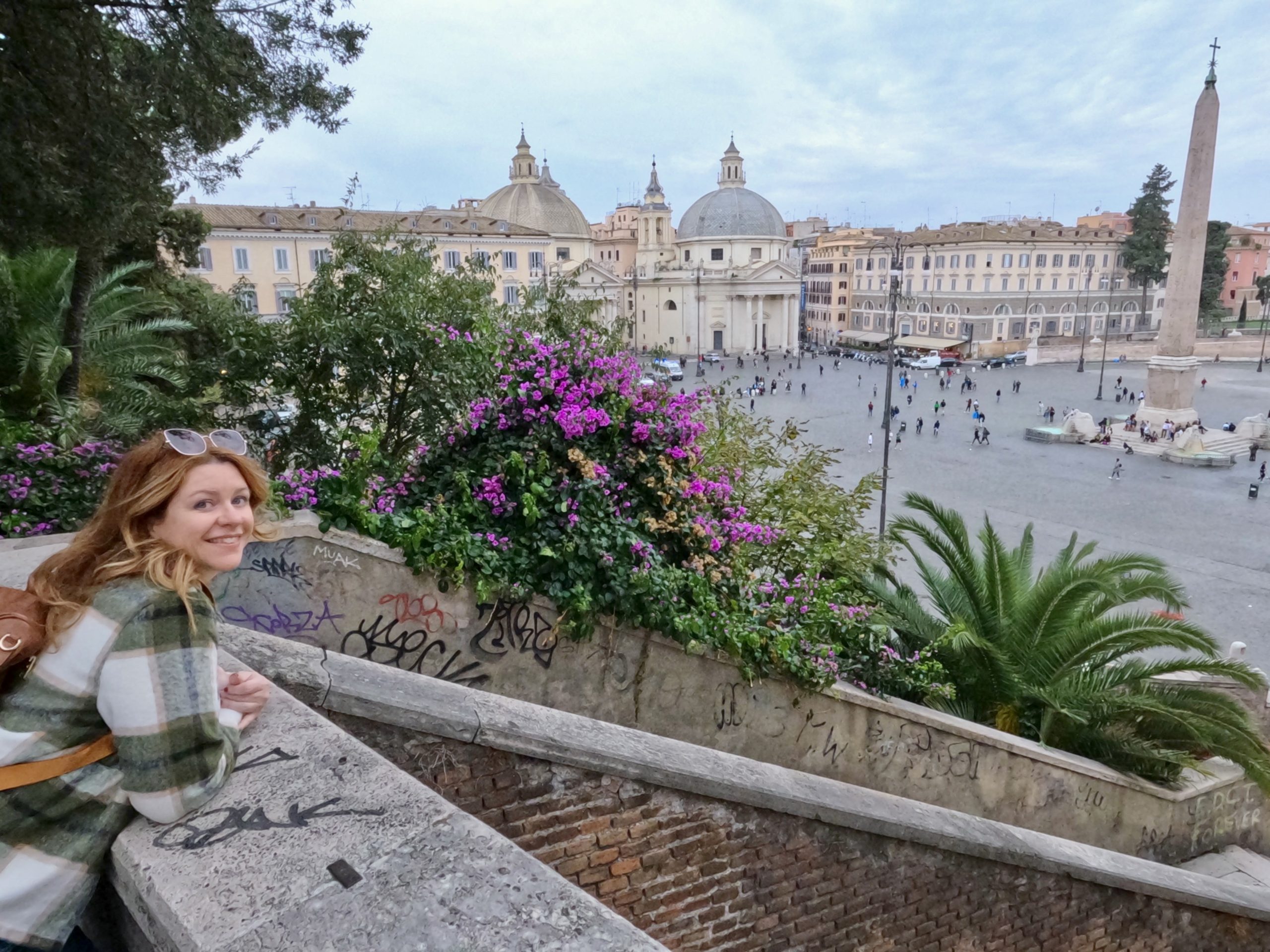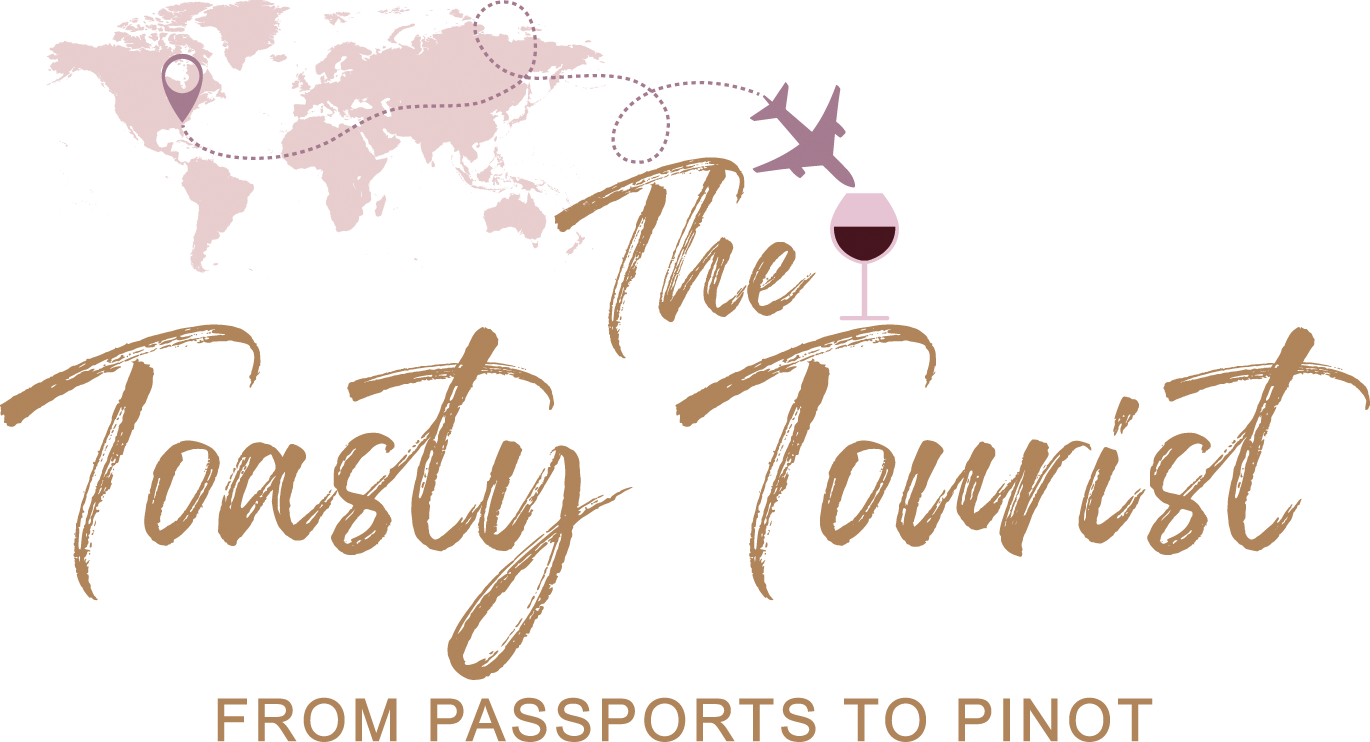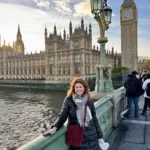3 Perfect Days in Rome

Rome is undoubtedly one of the top destinations in the world. It has an intoxicating mix of both ancient and more recent history, great food, and a fun, urban attitude. You could spend weeks there and not see everything, but most people go to Rome as part of a multi-city itinerary – it’s just too tempting to see as much of beautiful Italy as possible. So with that in mind, I’m sharing the 3 day itinerary I planned for my husband and I for our first trip to the eternal city.

This itinerary is perfect for those who like to keep busy while traveling. If it feels too packed to you, just omit the items you are least interested in. Or do it over 4 or 5 days instead!
The most important thing is to be flexible. Anything can arise that changes your plans while traveling, and you can’t let it upset you or affect your trip. For instance, a combination of a plane delay and last minute scheduled tour time change (as in, they contacted me the DAY before we left) meant some last minute switching a LOT of things around on the itinerary. And by last minute I mean the cab ride from the airport to the hotel. I had done so much planning at that point, I felt like a map of Rome was living in my head, so it really wasn’t too difficult to make modifications. I know Todd thought I might lose it, but I had decided I would roll with whatever happened. We still got to do nearly everything we planned, and it turned out that having more of a relaxed arrival day helped us get into “vacation mode”.
The brief itinerary outline is below – I grouped things together that made sense for a mostly walking tour each day, as that is my preferred way to see a city. I’ll include optional items as well – not everything appeals to everyone, and you should take the time to explore to your hearts content wherever possible (meaning some stops may need to be omitted).
Day 3: The Vatican, Piazza del Popoli, Villa Borghese, Galleria Borghese, Spanish Steps
Without further adieu, lets go to Rome!

Day 1: Trevi Fountain, Pantheon, Piazza Navona, Castel St. Angelo, Campo di Fiori, Largo di Torre Argentina, Capitoline Hill, Trastavere
Start at the Trevi Fountain
Whether you arrive in the morning as most flights from the US do, or if you arrived by train from elsewhere in Italy, this will provide a good starting point. I prefer to stay in the center of the action – I don’t mind if it’s a bit more touristy. After all, I AM a tourist, and I tend to travel during shoulder season, so it’s not too crowded. If you stay a bit more outside the city center, just make sure you are close to a metro stop. While there are clusters of sights together, you will want to utilize public transportation where you can. We stuck to the metro when needed, as we found the buses to be a bit unreliable.
Wherever your starting point, you will hear the Trevi before you see it, and it’s right in the middle of the city center. If you have watched ANY film set in Rome, the Trevi Fountain has likely made an appearance. Built in the 17th century (fairly new by Roman standards), it’s a truly iconic wonder of Rome.

After you’ve had your fill of gazing at the intricacies of the fountain, it’s time to head to take a short 8 minute walk to The Pantheon. Make sure to have a reservation if you are visiting on the weekend – you can take care of that here. Originally built as a Roman temple in around 125AD, the Pantheon (which translated means “for all the gods”) is a great way to start getting a sense of just how ancient the city is. If you are into architecture or construction, the design of the Pantheon is fascinating. TO THIS DAY, it is the largest unsupported dome in the world.
After the Pantheon, keep heading west for approximately 4 minutes to Piazza Navona.

Piazza Navona is one of Rome’s expansive open squares (except it’s really a unique oblong shape), with the addition of 3 beautiful fountains and an Egyptian obelisk. It’s a great place to spend some time relaxing (although I wouldn’t necessarily recommend eating around the square – in general, try to avoid restaurants with menu pictures and people trying to usher you in). There are typically artists there selling their goods – I think local artwork makes a great souvenir. On the way to the Piazza Navona, stop into the church of San Luigi dei Francesi. Really, you can pop into pretty much any church you pass – there is usually something worth seeing, even briefly. This particular church is known for housing paintings by the Italian artist, Caravaggio.

From Piazza Navona, you will make the 10 minute stroll to Castel Sant’Angelo. ANOTHER OPTION if you are ready for lunch is to head straight to Campo de’Fiori and save the Castel Sant’Angelo for Day 3.
This takes you across the Tiber River, which is a really fun walk – there are artisans all along the river banks. If you are there on a the first Sunday of the month, be forewarned that is “free Sunday” in Rome, and the lines will be massive. In that situation, feel free to just walk around the grounds and enjoy the beauty of the building. I feel like Castle Sant’Angelo is kind of an unsung attraction, and that is just a testament to how much there is to do in Rome. It’s a castle from the 2nd century on the Tiber river – how cool is that? It was originally built as a tomb for the Emperor Hadrian, and that’s the Archangel Michael helming the building.
TIP: The first Sunday of every month is “Free Sunday” in Rome. This includes free admission to many sites and museums, and brings long lines to the attractions.

After Castel Sant’Angelo, it’s time for lunch! Head for Campo de’Fiori. it’s a 13 minute walk if you are coming from the Castel, and a 6 minute walk if you are coming straight from Piazza Navona.
Campo De’Fiori is a lively square with an open air market, and there are a ton of restaurants surrounding the area. Most of them are subpar tourist spots, but two good options are Osteria La Fortunata or, for a quicker bite, try the bakery Forno Campo De Fiori (closed on Sundays). Osteria La Fortunata serves classic rustic pasta dishes (they have ladies making pasta in the window), and their carbonara and amatriciana are especially delicious. The 90 year old owner and head chef, who is the granddaughter of the original Fortunata, can be seen making the rounds at all times.
Once you are finished with your food and wine (yes, you should always get wine in Italy), time to continue walking it off with a 6 minute stroll to Largo di Torre Argentina.




This was one of my favorite stops! Largo di Torre Argentina is famous because it is the excavated location where Julius Caesar was assassinated on the Ides or March in 44 B.C. And NOW, it is the oldest and most famous cat sanctuary in Rome. They focus on neuter/spay/medical care for community cats, and they have an adoption at a distance program. They are a great organization – if you feel inclined, please donate here.
Once you’ve had your fill of cat goodness, time to climb Capitoline Hill (approx 10 minutes).

There are several things to see in this area – once you get to the summit of the many stairs, you will find Piazza del Campidoglio, designed by Michelangelo. There is an equestrian statue of Marcus Aurelius in the center of the square. You can visit the Capitoline Museums while you are there (they are also free on the first Sunday of each month), or walk behind the Piazza for an overhead preview of the Roman Forum.
Capitoline Hill was important as the seat of civil administration for the Roman Empire, and was the site where victories were celebrated. Michelangelo’s redesign in the 16th century was commissioned by Pope Paul III in honor of a visit from Charles V of Habsburg.
Next, we will head to the the neighborhood of Trastavere!
We did the 20 minute walk from Capitoline Hill to Trastavere because we wanted to go across the Isola Tiberina (small island in the middle of the Tiber River) and the weather was great. If the weather is not so great or you are getting tired, a taxi is a great choice as well!
Once across the river in Trastavere you will find shops, coffee bars, and neighborhood trattorias. We stopped for a caffeine hit and made our way to the Basilica of Santa Maria. It is said this is the first church dedicated to the Virgin Mary, and it’s certainly worth a look as one of the oldest churches in Rome. It’s off from a square that is an excellent place to people watch (Piazza di Santa Maria). It should be aperitivo time by now, so grab a seat and enjoy a drink or two prior to dinner.
One of our very favorite things about Italy is the aperitivo! After a busy day of sightseeing, it is so relaxing to pop over to a restaurant and sit outside with a light drink and snacks prior to dinner. Some restaurants even have complimentary snacks – anything from simple mixed nuts to more extravagant canapes. The most popular drinks to order are prosecco, negroni (my husband’s favorite), and an Aperol spritz (my favorite).

Where Trastavere really shines is in the selection and value of its restaurants. Not many take reservations, so expect a wait! Some recommended restaurants are Tonnarello, Nannarella, and Grazia & Graziella. All serve typical Roman fare at a great price point!
After dessert, you have the option of going back to your hotel for a good nights sleep, heading back by any sights you want to see lit up at night (Trevi Fountain is a good choice), or check out some nightlife in the area!
Day 2: Ancient Rome: Colosseum, Palatine Hill, Roman Forum, Baths of Caracalla, Giardino degli Aranci

Time to see the famous sights of ancient Rome! When you say Rome, the Colosseum is probably the first thing that comes to mind. It’s an incredible historic structure, and I HIGHLY recommend an organized tour to check it out. A guided tour will allow you to skip the long line, and you will get a much better picture of the history associated with the structure. You are also able to see areas that are not accessible with a regular ticket. Some great tour options are here and here.
To get to the Colosseum area, there is an easily accessible stop on metro line B. This metro line can be used throughout the center of ancient Rome. Another options is to stroll in on Via del Fori Imperiali. This historical road leads to the Colosseum and is surrounded by excavated ruins. It was completed in its current form during Italy’s fascist regime – Mussolini cut the ribbon signifying the opening of the road on horseback.

Many tours also include the Roman Forum and Palatine Hill. The Forum is located in a valley between Palatine Hill and Capitoline Hill (where we visited on Day 1). This was the center for day to day life for the ancient Romans, and consists of the ruins of several government and commercial buildings. This whole area is much larger than you may expect, and will take some time to go through thoroughly.

Palatine Hill is the centermost of the 7 hills of Rome. It is less crowded than the more often visited Forum and Colosseum, but has still yielded an impressive collection of ruins. It was a sought after address in ancient times, and the wealthy elite scrambled to build their palaces on the hill. It is situated directly between the Forum and Circus Maximus.
If you are looking for lunch in the area, Osteria Circo is a great option, particularly for their cacio e pepe!
Optional: If you have time, Circus Maximus is a great stop to add to your itinerary after Palatine Hill. Circus Maximus was the site of chariot races and other entertainment. It was used almost continuously for at least a thousand years, and even now is a site used for concerts. You can purchase a ticket for an augmented virtual reality experience that takes you through how Circus Maximus appeared throughout the ages here.

Following the Colosseum/Palatine Hill/Roman Forum complex, make the 13 minute walk to the Baths of Caracalla. Baths were a hugely important part of Roman society, and these were the 2nd largest in Rome. They are amazingly well preserved!
From here, time to climb another hill – this time, it’s Aventine Hill to reach the Giardino degli Aranci for excellent sunset views! This will take about a 20 minute walk from the Baths of Caracalla. St Peters Basilica (one of tomorrow’s destinations) is front and center of the view from among the orange and pine trees.
If you have extra time before or after the Giardino degli Aranci, Boca della Verita (the mouth of truth) is worth a quick visit (6 minute walk). It’s really just a photo op (although a pretty cool one) – if you are out of time, no big deal to skip it! You put your hand in the mouth, and legend has it that it will bite the hand off of anyone who doesn’t tell the truth.

And that’s a wrap on Day 2! Time to grab some dinner and rest up for your final day. It’s not hard to find good food in Rome, but Colline Emiliane is something special. if you are lucky enough to visit on a day they are serving lasagna verde, you will be having a fantastic meal! Don’t forget to call and make a reservation well in advance.

Day 3: The Vatican, Piazza del Popoli, Villa Borghese, Galleria Borghese, Spanish Steps
Time to head to the Vatican! This is another situation where I highly recommend a guided tour. This is a fantastic tour – you get skip the line into the Vatican museums (which leads into the Sistine Chapel) and into St. Peter’s Basilica. You also get a ton of historical reference and information on things to look for, especially when gazing at the ceiling of the Sistine Chapel (there is no speaking in the chapel). There are some great juicy stories about the leaders of the Catholic church of the time and Michelangelo (and other artists)! If you want a guided tour of St. Peter’s Basilica as well, try this one. You can also book a tour to include the underground grottoes here.
You can ride the metro (line A) to the Vatican, and will then have just a short distance to walk.

Give yourself plenty of time to really take in all the Vatican has to offer. You typically go from the absolutely packed museums, to the Sistine Chapel, and finally to St. Peter’s Basilica where you have the option to climb to the top of the dome or to the first terrace of the dome. You can also take an elevator to the first terrace of the dome. Warning for anyone with claustrophobia, the last part of the climb could prove challenging – it’s very narrow and there is no turning back once you begin!

You also have the option to walk through St. Peter’s Basilica (there is a huge variety of artwork, tombs, etc). Some tours also add on a tour of the underground Papal tombs.
As you leave through St. Peter’s Square, keep an eye out for the very traditionally dressed Swiss Guard – they have protected the Pope and his residence since 1506.

Grab some lunch at Mercato Trionfale (17 min walk, one of the largest indoor food markets in Europe!). OR if you aren’t that hungry yet, snag some tiramisu from the famous Pompi nearby (9 minute walk, they have different flavors!) and head to the Spanish steps via the same Metro line (Line A – Ottaviano to Spagna)
If you weren’t quite ready to eat while you were near the Vatican, once you get to the Spanish steps, Bar Fratelli is nearby with a great coffee/casual menu. It was full of locals the day we were there, which is always a good sign. Otherwise, head to the steps!
The Piazza de Spagna in front of the steps is expansive and usually full of people. Interestingly, you can no longer sit on the steps themselves (this is preservation measure), but feel free to stroll all the way to the top! You can check out Trinita dei Monti, the little church at the top, if you are so inclined.

Make your way to the Villa Borghese
You can follow along from the top of the steps bearing right to the Villa Borghese gardens (11 minute walk) . This is the most popular park in Rome, and it features museums, buildings, sculptures, as well as green space. This includes the famous Galleria Borghese museum, and a replica of Shakespeare’s Globe Theater. It’s huge, so give yourself some time to have a leisurely stroll. After the crowds of the Vatican and Spanish Steps, it’s really pleasant to have some time in the open greenery.
If you want to go to the Galleria Borghese (and you should, it has an amazing collection), you will need to buy timed tickets ahead of time. Galleria Borghese is also free on the first Sunday of the month, but note that you still need a timed ticket because they limit visitors.
If you are ready for an afternoon snack break – (maybe a cornetto or a sfogliatelle? I had both!), there are a few restaurants and cafes within the gardens.
As you exit the park, stop at the Terrazza del Pincio – this is a terrace overlooking the Piazza del Popolo (you’ll be going there next)- for a gorgeous view.

Walk down the steps from the Terrazza del Pincio to the Piazza del Popolo.
This is a huge square just inside the Aurelian walls on the north side of the city. It features a huge Egyptian obelisk (from 10BC!, although the Piazza was not its original location) in the center, and on the south side are the twin churches. It’s not as crowded as the Piazza de Spagna, take some time sitting at the obelisk to take it all in!

And now, you have wrapped up your time in Rome! You got a great overview of all the city has to offer, but there is still plenty to do for your next visit. I hope from here you are heading to another of Italy’s fascinating cities (Florence, Venice, Naples, etc)! Arrivederci can mean either “goodbye” OR “see you later” – make it the 2nd option!
Related
Related Posts
How to Have your Best 3 Days in Florence
What makes Florence such a popular destination in Italy? After all, Italy is full of …
Related
Cookie Consent
We use cookies to improve your experience on our site. By using our site, you consent to cookies.
This website uses cookies
Websites store cookies to enhance functionality and personalise your experience. You can manage your preferences, but blocking some cookies may impact site performance and services.
Essential cookies enable basic functions and are necessary for the proper function of the website.
These cookies are needed for adding comments on this website.
Statistics cookies collect information anonymously. This information helps us understand how visitors use our website.
Google Analytics is a powerful tool that tracks and analyzes website traffic for informed marketing decisions.
Service URL: policies.google.com (opens in a new window)




